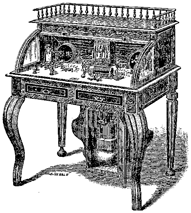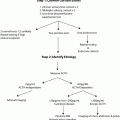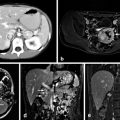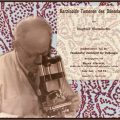Chvostek’s sign has been reported to be positive in many diseases: tetany in the newborn, hypoparathyroidism, alkalosis, rickets, diptheria, measles, scarlet fever, alcoholism, whooping cough, typhoid fever, tonsillar diseases, myxedema, joint neuralgia, and tuberculosis. The common pathway in many of these states seems to be hypocalcemia, but many published papers report a positive Chvostek’s sign in 5–50 % of normal healthy people, particularly children, giving it a fairly poor specificity. In 20 % of patients with a positive Chvostek’s sign, this is a unilateral finding, and is a transient finding in other patients. Additionally, it can be negative in up to 30 % of patients who do have hypocalcemia, making its sensitivity poor, as well [5]. Dr. Chvostek had a son who followed in his father’s footsteps and became a physician. Franz Chvostek, Jr. published numerous papers describing the sign first described by his father, and was one of the first to associate the sign with derangement of the parathyroid glands. He concluded one article written in 1907 (31 years after his father originally described the sign) with the following
We believe that the mechanical hyperexcitability of the nerves, especially the facial, is an easily elicited and important symptoms of diseases of the parathyroids, a delicate test which reveals to us a disturbance in the functions of these organs. [6]
In addition to his discovery of the sign that eventually was linked to hypocalcemia and hypoparathyroidism, he was a prolific writer and was very interested in the use of electricity as medical therapy. Chvostek published at least 163 articles on various medical subjects, mostly related to pathology and treatment of diseases of the nervous system, but at least six on the therapeutic use of electricity in medicine [7]. Interestingly, what seemed to capture his attention for many years was the treatment of another endocrine disorder, goiter.
In 1835, Robert James Graves described a disease that presented with goiter and exophthalmos. Today, we know Graves’ disease as hyperthyroidism caused by circulating autoantibodies, but during Chvostek’s time, exophthalmic goiter was thought to be caused by derangement of the sympathetic nervous system. Specifically, Chvostek himself thought the main pathology of exophthalmic goiter was the medulla oblongata, and that cervical chain ganglia and the cervical vagus nerve were involved in what was thought to be primarily a neurologic problem. Because Chvostek believed that neurologic pathologies were amenable to electric therapy, he treated and published his results of over 30 women with the affliction. He describes placing one electrode over the position of the cervical sympathetic ganglion and one on either the goiter or the eyelids. He reports that the electric current had a direct effect on the medulla oblongata, the cervical sympathetic chain, and the vagus nerves. He kept the current going just sufficient to produce a sensation of burning, and noted that “strong currents have not seldom been followed by patients getting worse.” He noted decrease in the pulse rates of women treated with electrotherapy, as well as improvement in exophthalmos and shrinking of the goiter in all 30 women [8].
A few years later, news of Chvostek’s electrolysis technique made it across the Atlantic Ocean to Baltimore. In one 1886 article, it is reported that Chvostek cured nine cases of gonorrheal orchitis, one traumatic infiltration in the leg, six indolent inguinal buboes (inflamed lymph nodes), 30 goiters, and improved one patient with a large pannus by passing electrical current through patients. Chvostek’s method is described in more detail: “Ordinary sponge electrodes are attached to the skin and then to a battery of thirteen Seimens-Halske cells, passing the current in sittings of 5 min and changing the location of the electrodes every minute or two. If no improvement is seen after 15 sittings, the treatment need not be further pursued.” The author goes on to write that he personally tried the method on one woman and the goiter diminished somewhat after three sittings, but then the patient mysteriously left the city and had not yet returned at the time of publication. The author expressed that he received a letter from her affirming her belief in the method and stating that she wished to resume treatment upon her return to Baltimore, but the reader is left to wonder if the woman shared her doctor’s enthusiasm for electrolysis, despite the unit that housed the battery cells having the added bonus that it was “beautiful as a piece of office furniture” (Fig. 28.2) [9].









